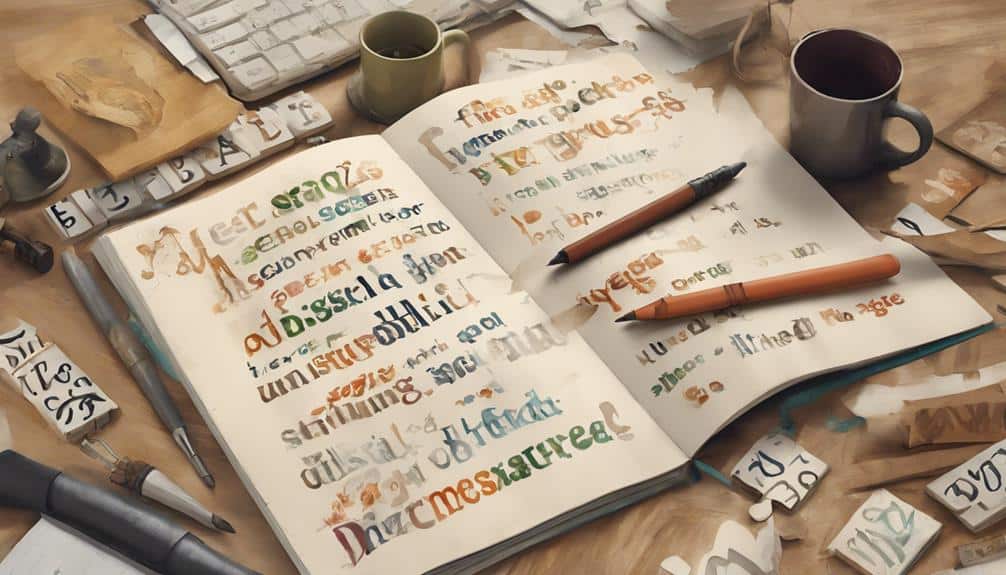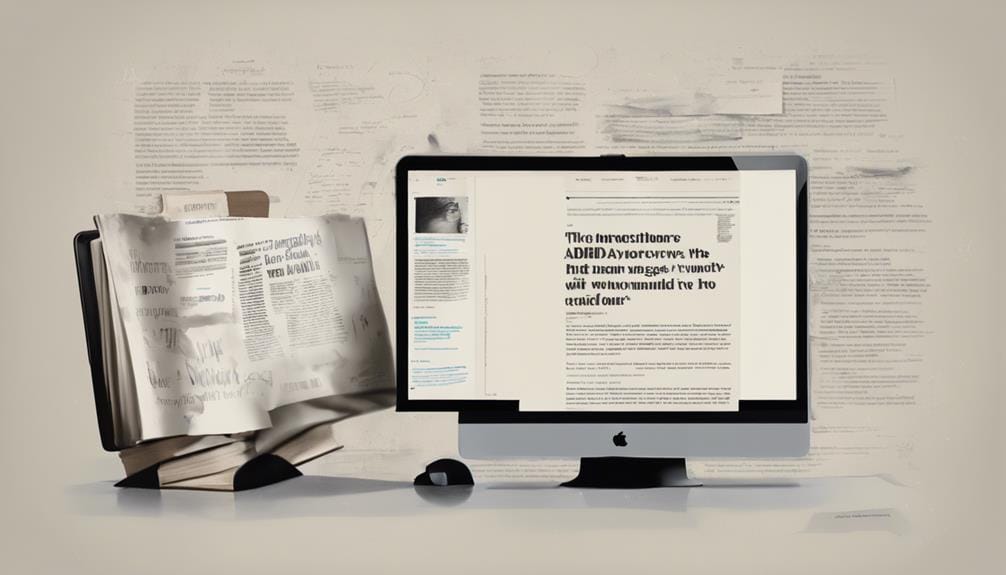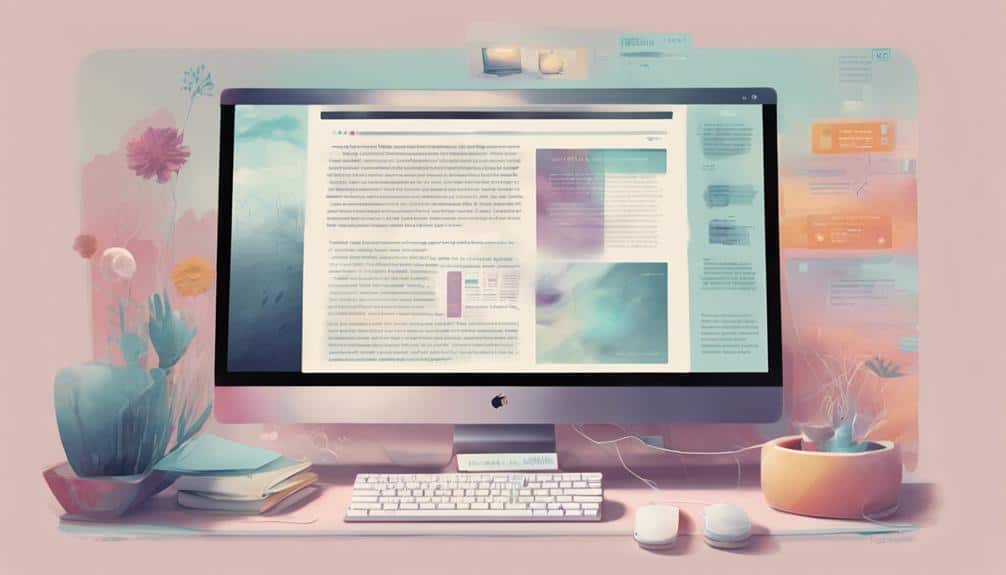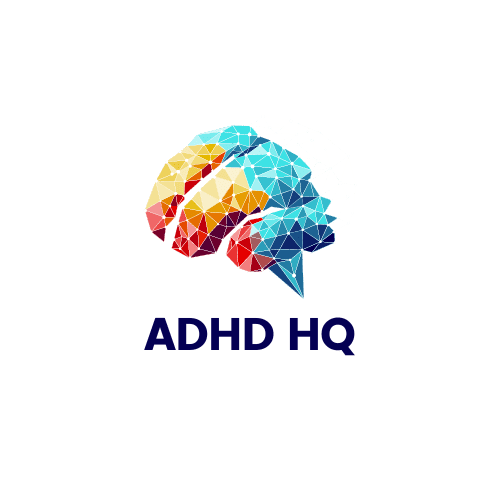Neurodivergent Font
As someone interested in typography, I recently discovered that approximately 15-20% of the global population is affected by dyslexia, making fonts that cater to neurodivergent needs more relevant than ever.
When considering the impact fonts can have on accessibility and learning outcomes, the concept of Neurodivergent Font opens up a fascinating discussion on how design choices can positively influence individuals with conditions like dyslexia, ADHD, and autism.
The evolution of typography to accommodate diverse cognitive styles not only showcases innovation but also underscores the importance of inclusivity in design practices.
Key Takeaways
- Tailored fonts like Dyslexie and Open Dyslexic aid dyslexic readers with enhanced readability.
- Font customization enhances accessibility for neurodiverse individuals, promoting inclusivity.
- Design choices, such as wider spacing and unique shapes, optimize font legibility for diverse needs.
- Specialized fonts and visual elements improve cognitive processing and information retention for neurodivergent individuals.
Font Features for Dyslexia

When designing fonts for dyslexia, it's important to prioritize legibility by incorporating wider spacing and unique letter shapes to enhance readability for individuals with dyslexia. Line spacing plays a critical role in allowing the text to breathe, reducing the chances of letters and words blending together.
Fonts like Open Dyslexic are specifically crafted to address these challenges by offering distinct letterforms that are less likely to be confused with one another. These fonts, such as Dyslexie and Open Dyslexic, are tailored to improve the reading experience for individuals with dyslexia, supporting them in moving through written content more smoothly.
Bionic Reading, a concept that combines various typographical elements to aid readers with neurodiverse conditions like dyslexia, underscores the importance of thoughtful font design. By focusing on features like line spacing and specialized fonts such as Open Dyslexic, we can create a more inclusive reading environment that caters to the diverse needs of individuals with dyslexia.
Enhancing Readability for ADHD

Moving from considerations for dyslexia to enhancing readability for ADHD, the choice of font becomes a critical factor in facilitating smoother reading experiences for individuals with ADHD. When aiming to improve readability for ADHD, here are some key points to keep in mind:
- Sans Fonts are Preferable: Opting for sans-serif fonts is beneficial for ADHD readability as they offer clarity and are easier to read compared to serif fonts.
- Readability Over Aesthetics: Prioritizing readability over aesthetic appeal is essential when selecting fonts for ADHD-friendly content to guarantee a seamless reading experience.
- Personal Adjustments Matter: Making personal adjustments such as modifying font size and spacing can significantly enhance readability for individuals with ADHD, tailoring the text to their specific needs.
Considering the importance of font choice for ADHD readability, tools like Chrome extensions can further assist in customizing fonts and layouts to optimize reading experiences for individuals with ADHD. Remember, a thoughtful font selection can make a world of difference in enhancing readability for those with ADHD.
Autism-Friendly Typography Tips

Optimizing typography to be autism-friendly involves prioritizing visual elements such as color contrast and simplicity to support individuals with Autism Spectrum Disorder. Sensory friendly fonts, customized layouts, and visual aids play key roles in creating materials that cater to the unique needs of individuals on the autism spectrum.
By selecting fonts that are easy to read and avoiding overly intricate designs, we can provide a more accessible reading experience. Customized layouts, incorporating icons and images, help organize information in a structured manner, aiding memory retention for neurodivergent individuals, including those with autism.
Additionally, clear visual hierarchy and design guidelines are essential for enhancing comprehension and engagement. Choosing muted color palettes and avoiding high contrast colors can also help accommodate sensory sensitivities, ultimately improving the overall readability and user experience for individuals with autism.
Customizing Fonts for Dysgraphia

I understand how challenging it can be to find fonts that cater to dysgraphia-specific needs.
Customizing fonts for dysgraphia involves tailoring letter shapes and spacing to enhance readability and support better writing outcomes.
Dysgraphia Font Options
When customizing fonts for dysgraphia, it's essential to prioritize clarity and simplicity to enhance readability for individuals with writing difficulties.
3 Dysgraphia Font Options:
- Dysgraphia Font Benefits: Fonts like Dysgraphia, AbcPrint, and Handwriting Without Tears are specifically designed to aid individuals with dysgraphia by reducing writing challenges and enhancing legibility.
- Font Customization Tips: Adjust letter spacing, size, and style to improve readability for people with dysgraphia, focusing on simplicity and clarity.
- Improved Legibility Techniques: Features such as increased letter spacing and distinct letter forms in dysgraphia-friendly fonts aim to enhance letter recognition and overall readability for those with dysgraphia.
Customizing fonts with dysgraphia in mind can significantly enhance the reading and writing experience for individuals facing these challenges.
Readability Considerations for Dysgraphia
Considering the unique readability needs of individuals with dysgraphia, font customization plays a significant role in enhancing their reading experience.
Letter spacing techniques, informed by readability studies, are important in preventing overcrowding and aiding in letter recognition. Font size adjustments are essential for visual comfort, ensuring that text is easily legible without causing strain.
Style modifications, such as increased thickness or unique letter shapes, provide cognitive support by enhancing character differentiation for dysgraphic readers. Dysgraphia-friendly fonts prioritize clarity and legibility, supporting those with challenges in handwriting and fine motor skills.
User Experience Enhancements
Enhancing the user experience for individuals with dysgraphia involves customizing fonts to improve readability and facilitate smoother reading and writing experiences.
Key Points:
- Text legibility enhancements, Font customization options
- Visual organization techniques, User interface improvements
- Reading comprehension strategies, Typographic adjustments
Customizing fonts for dysgraphia includes adjusting letter spacing, size, and style to aid those with writing difficulties. Specific features such as increased spacing and distinct characters can improve text recognition.
Fonts tailored for dysgraphia aim to reduce visual crowding and confusion between letters, supporting better reading and writing experiences. Utilizing heavier strokes, simplified shapes, and enhanced contrast can help with letter formation and recognition.
The ultimate goal is to create a more inclusive and accessible reading environment for individuals with writing challenges.
Visual Processing Strategies

When it comes to visual processing strategies, color contrast benefits and simplified layouts can make a world of difference.
These approaches help in making information more accessible and easier to comprehend for neurodivergent individuals.
Color Contrast Benefits
Color contrast plays an important role in aiding dyslexic students by enhancing readability and reducing visual stress.
Benefits of Color Contrast:
- Color Palette, Readability: Using a well-thought-out color palette with appropriate contrast can greatly improve the readability of text for dyslexic individuals.
- Visual Stress, Contrast: Varied color differences help in reducing visual stress and making it easier for neurodivergent students to process information.
- Differentiation, Comprehension: The differentiation provided by contrasting colors aids in better comprehension, allowing neurodivergent individuals to distinguish between various elements more effectively.
Simplified Layouts Aid
How can simplified layouts aid neurodivergent individuals in processing information more effectively?
Visual organization techniques, simplified design principles, and layout optimization strategies play an important role in supporting neurodiverse individuals. By implementing clear visual hierarchy and structured layouts, we can help reduce cognitive overload and assist neurodivergent learners in focusing on essential information.
These simplified design principles not only enhance comprehension but also make it easier for neurodiverse students to navigate through content with less cognitive strain. Through the use of visual processing strategies, such as visual hierarchy techniques, we can create an environment that's conducive to improved understanding and retention of information, ultimately enhancing the overall learning experience for neurodivergent individuals.
Inclusive Design for Neurodiversity

Inclusive design for neurodiversity aims to enhance accessibility for individuals with conditions like dyslexia and ADHD through specialized fonts and visual elements.
- Font legibility: Fonts like Dyslexie and Open Dyslexic are tailored to improve readability for neurodivergent individuals, making it easier for them to process written information.
- Visual preferences: Utilizing color contrasts, icons, and clear visual hierarchy caters to a diverse range of learners, ensuring content is engaging and comprehensible for those with neurodiverse conditions.
- Design aesthetics: Humanist fonts, mono-spaced fonts, and specific color choices are strategically employed to enhance readability and accessibility for neurodiverse students, prioritizing their learning experience.
Frequently Asked Questions
What Font Is Best for Neurodivergent?
For font accessibility and improved reading comprehension, neurodiverse design is essential. Opt for handwriting-like or mono-spaced fonts, and consider humanist styles for dyslexic users. Avoid serif fonts for better readability overall.
What Is the ADHD Font Called?
When considering font accessibility for ADHD, prioritizing legibility is essential. While no specific 'ADHD font' exists, sans serif fonts like Open Dyslexic are promising. Choosing a font designed for dyslexia may enhance readability and support focus.
What Font Is Neurodiverse Reading?
When choosing fonts for neurodiverse reading, considering font preferences is essential. The impact of font design on readability is profound, affecting the overall reading experience. Fonts with wider letters and increased spacing generally enhance readability for neurodiverse individuals.
What Font Is Best for Adhd?
When it comes to fonts for ADHD, sans-serif options like Open Sans shine. They enhance readability, reducing distractions for improved comprehension. Personal tweaks in size and spacing play a big role in easing visual processing.
Conclusion
So, next time you're choosing a font, why not consider the impact it can have on neurodiverse individuals? By using neurodivergent fonts, we can create a more inclusive and accessible environment for everyone.
Let's prioritize readability and understanding for all, because small changes in design can make a big difference in how information is perceived and processed.
Let's keep pursuing for inclusivity and support for neurodiverse individuals in all aspects of life.







